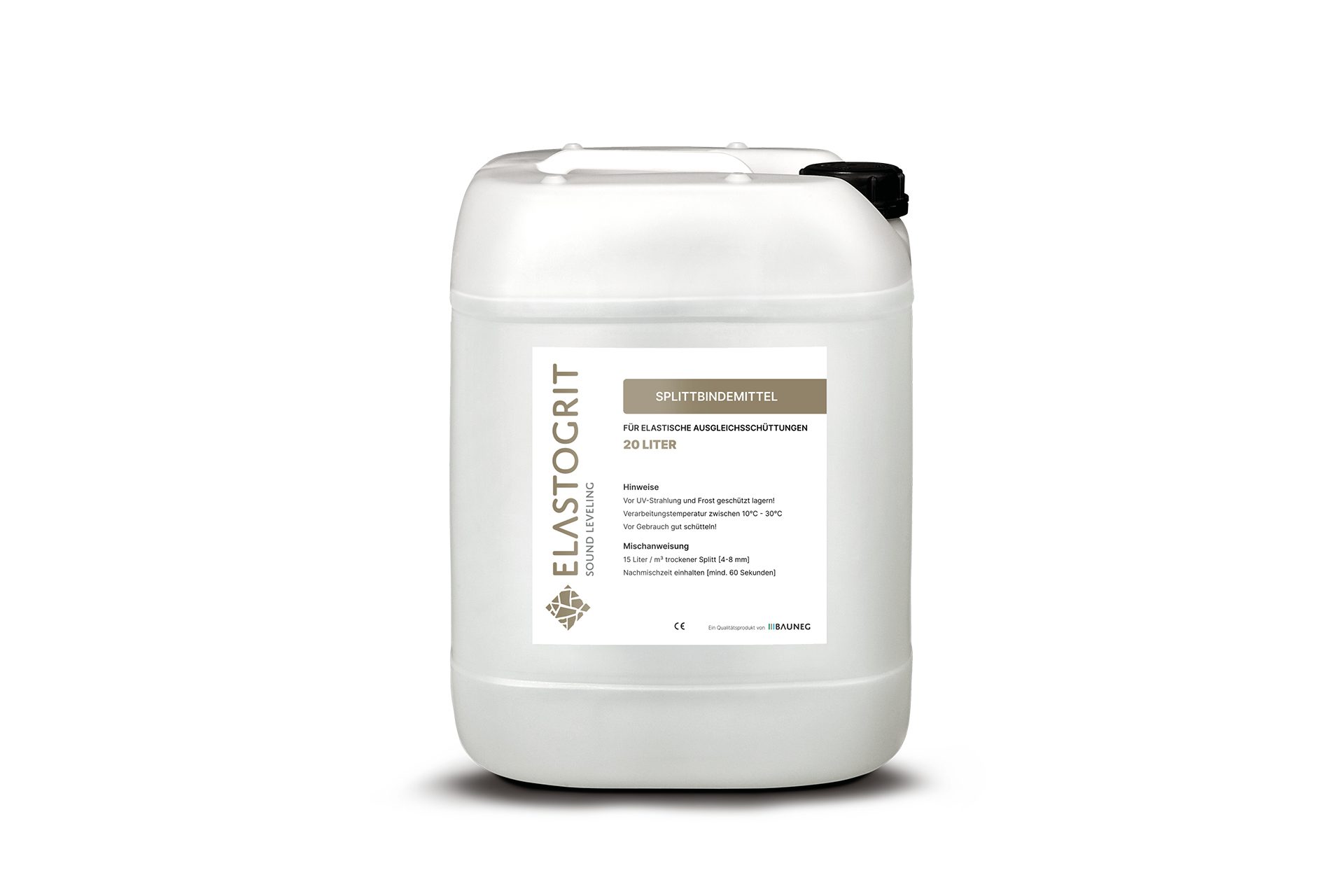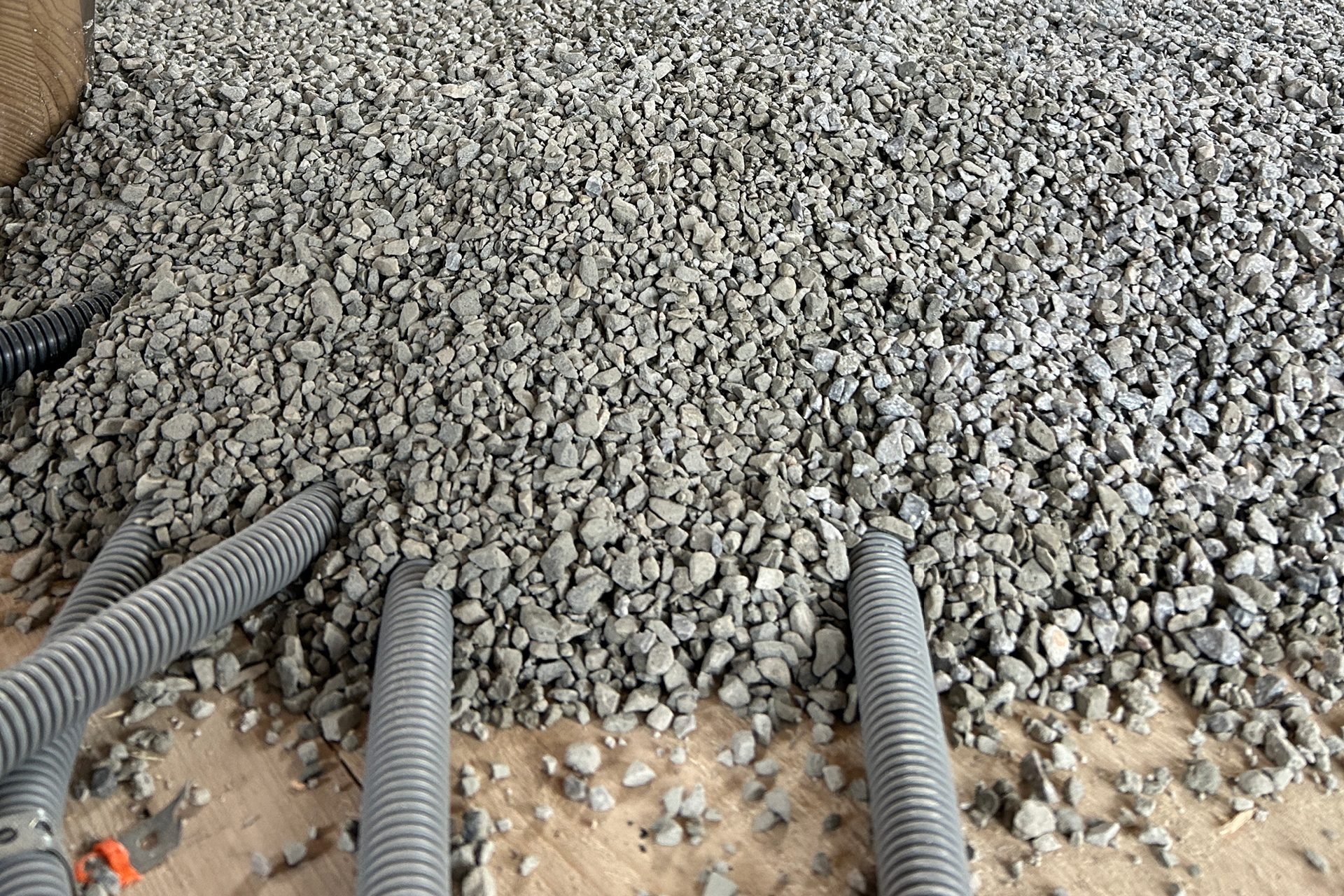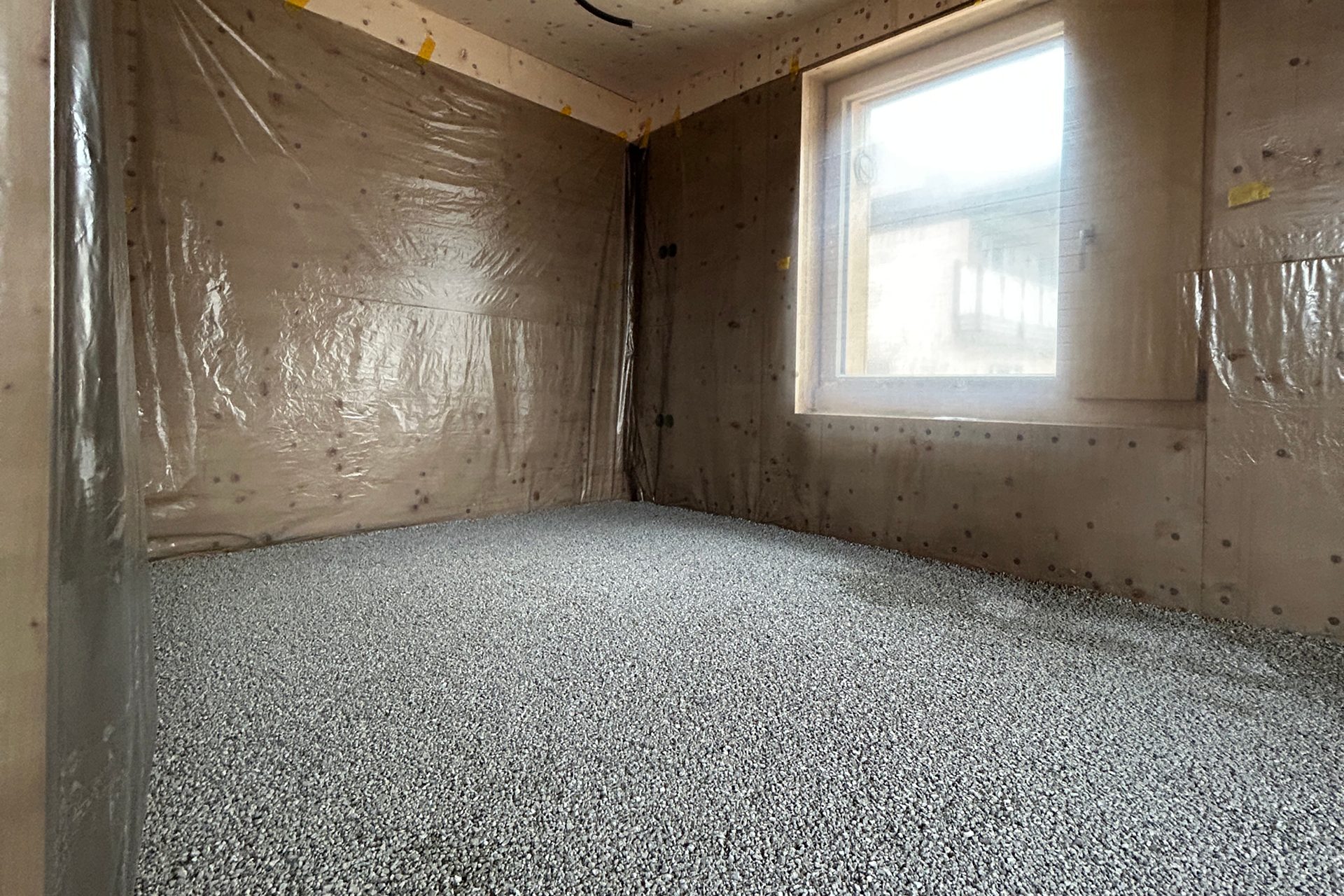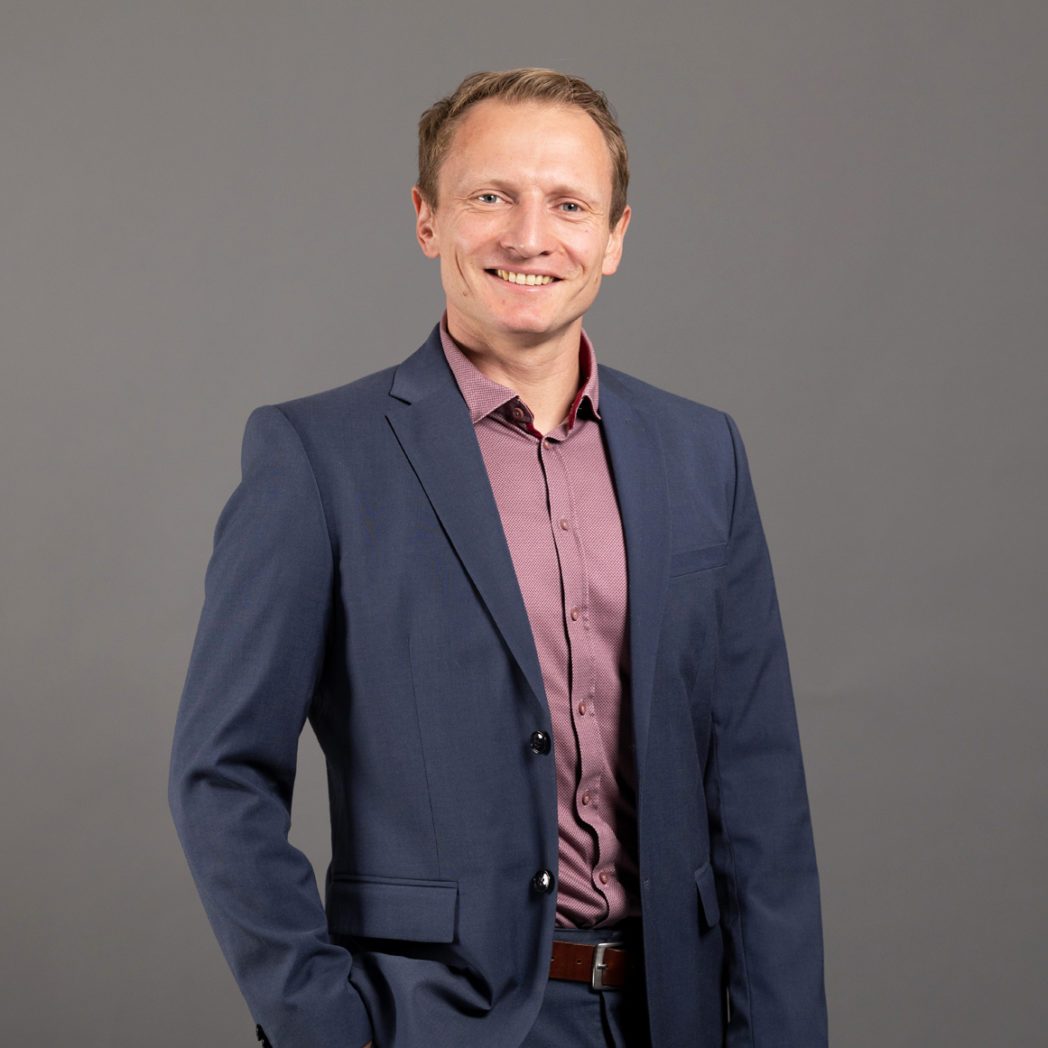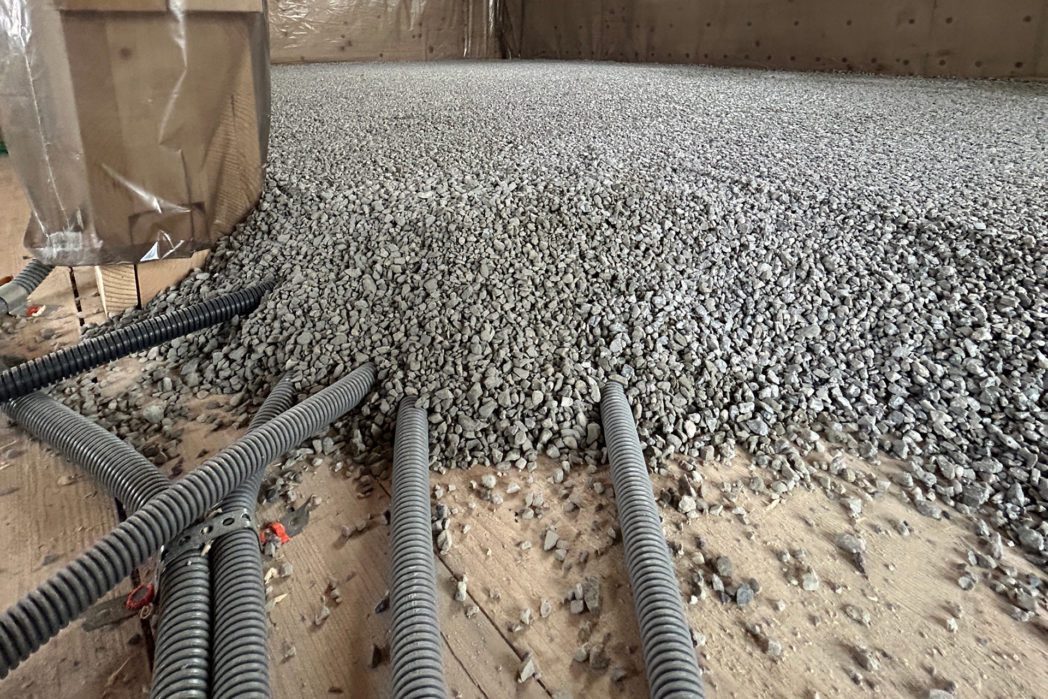
The SME from Thalgau specialises in floor constructions with special requirements. It supports screed manufacturers and architects in the planning process. Since 2022, the company has been working on the challenge of reducing impact sound in wooden buildings. This has to do with the floor structure: there are various cables and pipes under every floor. Between these and the screed is an insulating layer that provides both sound insulation and levelling. In concrete buildings, this usually consists of cement-bonded chippings. For timber constructions, which are becoming increasingly popular, levelling with cement is not possible. This is because cement is rigid and does not bounce. It therefore absorbs too little sound, which is why the sound insulation values specified by ÖNORM cannot be achieved in timber buildings.
The problem is well known in the construction industry. “We work with a number of building physicists and they have all told us that they would prefer to install unbound chippings, as this would provide the best sound insulation. However, ÖNORM four offers this. A binding agent that does not volatilise after drying but still remains elastic could be an alternative, according to the building physicists. It was in response to this suggestion that we developed our permanently elastic binder,” says Christoph Grden, Managing Director of Bauneg.
For the timber construction of the future
The production and application of Elastogrit uses very little water. In addition, the moisture it contains evaporates within 72 hours of being applied to the floor, which significantly speeds up construction progress. “Compared to normal, cement-bound chippings, this saves two weeks,” says expert Christoph Grden. Another advantage is the CO2 savings during production, as no cement is used.
And what do the people who initiated the innovations have to say about the finished product? “‘This is the timber construction of the future’ is what the building physicist said when we presented him with our test certificate,” says Grden happily.
Funding as a driver of innovation
The province of Salzburg promotes innovations such as these in order to strengthen Salzburg’s economy. Our Innovation Service Centre provides advice and helps with the application process. “Our funding expert Florian Dürager provided us with comprehensive advice and gave us great support in formulating the application and structuring the project. It was quite a challenge to get the idea out of our heads and onto paper and then to formulate it in such a way that it would be suitable for a funding application,” says Christoph Grden. “For us as a small company, it was very important to receive this innovation funding. It gave us quite a boost because it simply made it easier for us to make certain decisions, such as cooperation with testing institutes or construction site trials,” emphasises Grden. “We also realised that it’s really positive when someone from outside questions the planned project critically. Because as an outsider, you see things differently and don’t have the prior knowledge that exists within the company. That definitely helped us in the development of the project,” concludes Grden.
About Bauneg GmbH
- SME
- Thalgau
- 4 employees
- Development, production and trade of special products for floor constructions
- bauneg.at
This might also interest you
6. March 2025
salz21: Necessary Steps for the Future
On March 5, 2025, salz21 | Home of Innovation once again provided a platform for future topics, innovations, and interdisciplinary exchange. More than 1,000 visitors took the opportunity to learn about current developments and discuss perspectives for tomorrow. Three topics were particularly dominant: climate protection, artificial intelligence, and a strong Europe.
25. September 2024
Green Deal: How Sustainable Business Development Can Look
The EU aims to create political and legal frameworks through the Green Deal to transform both the economy and society in a sustainable way. The Pinzgau-based company Design Composite demonstrates how this can be implemented.
15. August 2024
Sunbeam Yachts: Where Craftsmanship Meets Digitalization
Sunbeam Yachts has been building exclusive sailing yachts at Mattsee for generations. The production is done by hand, with some processes now digitally supported.
12. August 2024
SBS: One Software for Many Self-Service Devices
As a leading provider of banking software in Salzburg, SBS is now exploring new markets. The company remains true to its core segment by offering manufacturer-neutral software for self-service devices in additional sectors.
